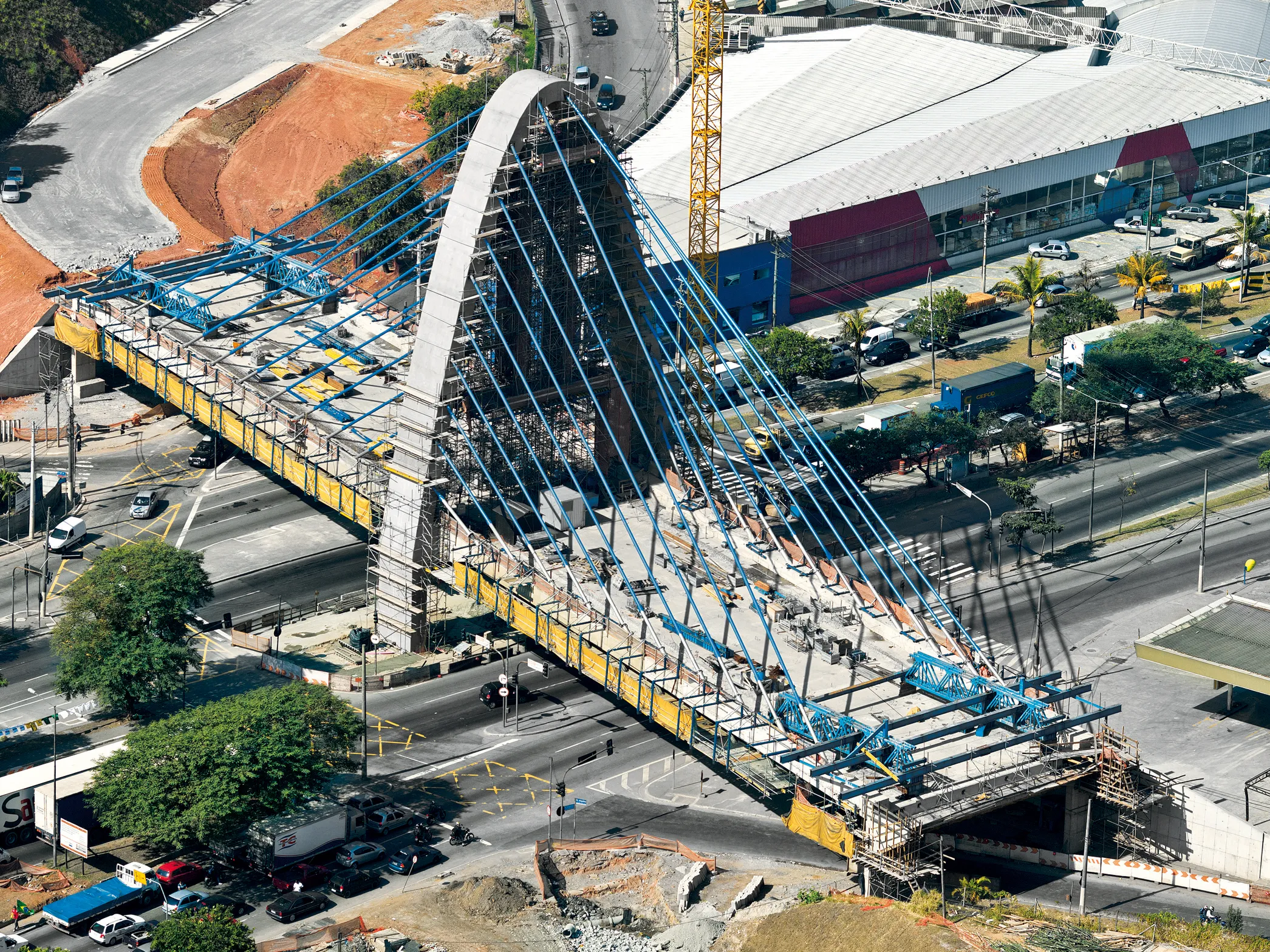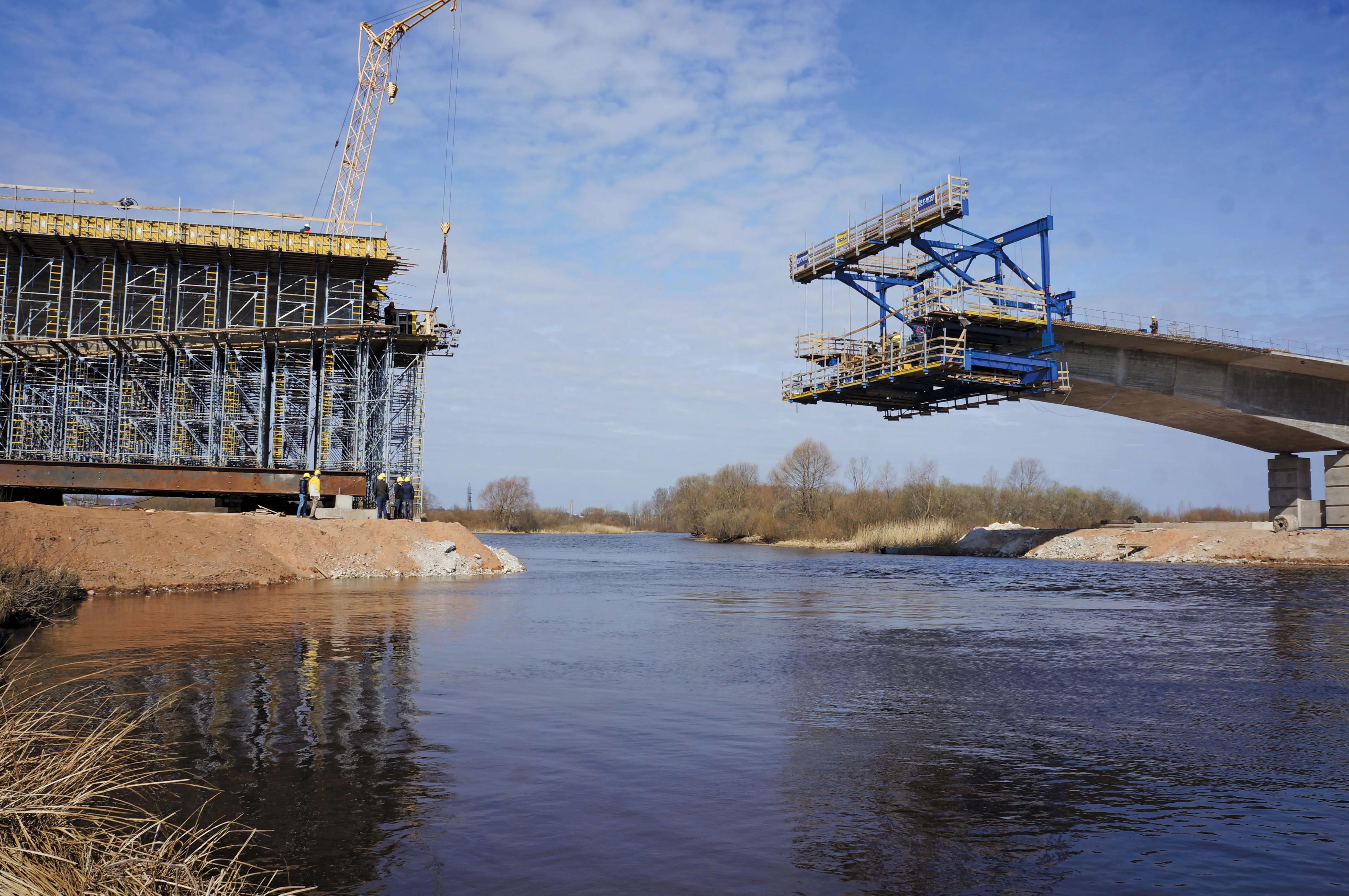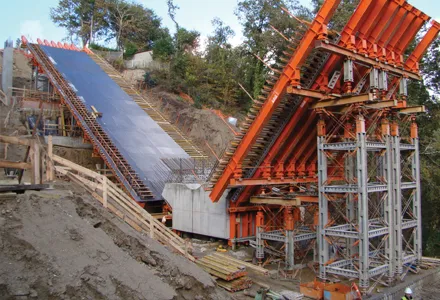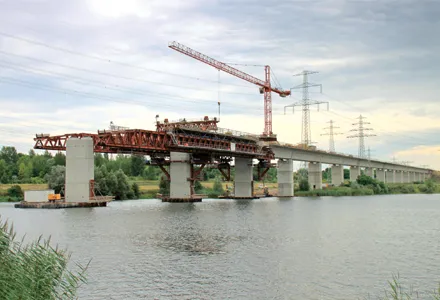To improve access from the east to São Paulo city centre, main contractor Construbase Engenharia is building a road complex comprising three viaducts and access ramps. The greatest challenge in Brazil's largest city is the showpiece Padre Adelino viaduct, a 122m long single-arch, single-span, cable-stayed concrete bridge moulded in situ with a parabola-shaped arch and a single-cell post-tensioned cantilever caisson
February 21, 2012
Read time: 4 mins

To improve access from the east to São Paulo city centre, main contractor 2962 Construbase Engenharia is building a road complex comprising three viaducts and access ramps.
The greatest challenge in Brazil's largest city is the showpiece Padre Adelino viaduct, a 122m long single-arch, single-span, cable-stayed concrete bridge moulded in situ with a parabola-shaped arch and a single-cell post-tensioned cantilever caisson. The 114 million reais (US$64.5 million) structure is 20m wide, has three lanes in both directions and is scheduled for completion soon.
On each side of bridge's arch are 20 stays (each consisting of 48 steel cables) that are painted an eye-catching blue colour to enhance the appearance of the bridge. The Mayor of São Paulo has declared the bridge to be the gateway to the eastern part of the city.
The works are being carried out for the Department of Urban Infrastructure and Works (SIURB) at São Paulo Prefecture by Construbase Engenharia, which is renting a Liebherr 110 EC-B6 flat-top tower crane from2963 Locar Guindastes e Transportes Intermodais, the biggest crane hire specialist in Latin America, to help erect the bridge.
The crane, supplied new to Locar by718 Liebherr Brazil, which is based in São Paulo, was moved onto the site in February 2008.
The chosen design of the bridge allows the use of lighter building slabs that are only half a metre thick, thereby maximising the height available between the bridge and the road surface and allowing the passage of large trucks. One of the most challenging aspects is the highly congested site surroundings with the new bridge crosses one of the city's busiest arterial roads.
Locar recommended use of the Liebherr crane, demonstrating that the boom could be used to access all the lifting points on the site while minimising the space being utilised.
The 110 EC-B6 has a maximum lift capacity of 6tonnes, which reduces to 1.5tonnes at the maximum 55m length of the jib, and it has an underhook height of 51.1m. Initially the 110 EC-B6 had been using its full jib length, but as the project had evolved this had been reduced to 40m.
Construbase is using a system of travelling formwork that does not require the disruption of the heavy traffic flow beneath and around the bridge, and the Liebherr 110 EC-B6 was selected because of the ease of transporting and erecting the crane. Its compact head module contains the hoist gear, slewing gear, central switchgear and the complete ball slewing ring support.
With this combination of lifting and forming technology, restrictions to traffic flow have been minimised.
Meanwhile, formwork specialist203 Doka Brazil convinced Construbase with a solution that allows the arch to be moulded to obtain perfect geometry and provide safety for the awkward work on the sloping structure. It supplied two sets of MF240 climbing formwork together with Top 50 beam formwork. The MF240 system is said to be ideal for structures of any shape or slope, and its cantilever beams can be displaced as a unit at any time with a single crane movement. The key benefit of this system is the adjustable work platform, which remains level for each concrete pouring stage, despite the slope of the arch.
With the two sets of MF240 climbing formwork the team was able to build the arch with perfect geometry and a high level of safety.
Doka says that as the Top 50 formwork can deal with even the most demanding structural demands, the concrete finish was excellent. D2 falsework towers were used to point the arch joint.
For pouring the single-cell caisson of the superstructure without interrupting traffic Construbase opted for the successive cantilever segment method, thereby enabling a lighter, more slender superstructure to be built. A further challenge was posed by the cable-tensing niches, the position of which changed for each concrete-pouring section.
For the successive cantilever segment Doka Brazil planned two sets of tailor-made Top 50 formwork to enable the work to progress very quickly. Once each segment was complete, the cables had to be tensioned. For this task Doka built peripheral platforms, taking advantage of the flexibility of the Top 50 system.
The greatest challenge in Brazil's largest city is the showpiece Padre Adelino viaduct, a 122m long single-arch, single-span, cable-stayed concrete bridge moulded in situ with a parabola-shaped arch and a single-cell post-tensioned cantilever caisson. The 114 million reais (US$64.5 million) structure is 20m wide, has three lanes in both directions and is scheduled for completion soon.
On each side of bridge's arch are 20 stays (each consisting of 48 steel cables) that are painted an eye-catching blue colour to enhance the appearance of the bridge. The Mayor of São Paulo has declared the bridge to be the gateway to the eastern part of the city.
The works are being carried out for the Department of Urban Infrastructure and Works (SIURB) at São Paulo Prefecture by Construbase Engenharia, which is renting a Liebherr 110 EC-B6 flat-top tower crane from
The crane, supplied new to Locar by
The chosen design of the bridge allows the use of lighter building slabs that are only half a metre thick, thereby maximising the height available between the bridge and the road surface and allowing the passage of large trucks. One of the most challenging aspects is the highly congested site surroundings with the new bridge crosses one of the city's busiest arterial roads.
Locar recommended use of the Liebherr crane, demonstrating that the boom could be used to access all the lifting points on the site while minimising the space being utilised.
The 110 EC-B6 has a maximum lift capacity of 6tonnes, which reduces to 1.5tonnes at the maximum 55m length of the jib, and it has an underhook height of 51.1m. Initially the 110 EC-B6 had been using its full jib length, but as the project had evolved this had been reduced to 40m.
Construbase is using a system of travelling formwork that does not require the disruption of the heavy traffic flow beneath and around the bridge, and the Liebherr 110 EC-B6 was selected because of the ease of transporting and erecting the crane. Its compact head module contains the hoist gear, slewing gear, central switchgear and the complete ball slewing ring support.
With this combination of lifting and forming technology, restrictions to traffic flow have been minimised.
Meanwhile, formwork specialist
With the two sets of MF240 climbing formwork the team was able to build the arch with perfect geometry and a high level of safety.
Doka says that as the Top 50 formwork can deal with even the most demanding structural demands, the concrete finish was excellent. D2 falsework towers were used to point the arch joint.
For pouring the single-cell caisson of the superstructure without interrupting traffic Construbase opted for the successive cantilever segment method, thereby enabling a lighter, more slender superstructure to be built. A further challenge was posed by the cable-tensing niches, the position of which changed for each concrete-pouring section.
For the successive cantilever segment Doka Brazil planned two sets of tailor-made Top 50 formwork to enable the work to progress very quickly. Once each segment was complete, the cables had to be tensioned. For this task Doka built peripheral platforms, taking advantage of the flexibility of the Top 50 system.









